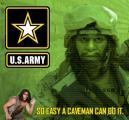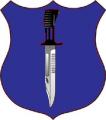Actually, the troops and units are willing and able (and the technology in the form of MC1-1 and other, newer parachutes is available but the senior leadership, ever overly cautious and worried lest they upset the Mothers of America with a too-high training casualty rate have forbidden the use of the MC1-1 in mass jumps due to fear of in air collisions. That's easily rectified with training but training is (was?) not a US Army priority. not to relieve angst, anyway...
The 82d experimented with the MC1-1 off and on after its introduction in the late 60s. Bottom line, it worked, casualties were slightly higher (IIRC, the extrapolated jump injury rate went from 7.1 per 100K to 7.8 per 100K) In any event, that's the current problem. My belief is that in a major war, that would not be a problem...
You're sort of stuck with a static line for two reasons; training time and cost for free fall and the ability to put a mass of people on the ground quickly.
To address your linear DZ problem -- and it is one -- multiple DZs at random distance and angles and short sticks are a workable and tested tactical solution but they are not used routinely because they are very difficult to plan and the rehearsal and training time required of the Air Crews upsets the USAF.
Again, given a war, most of that peacetime big deal stuff would be essentially not of concern.















Bookmarks